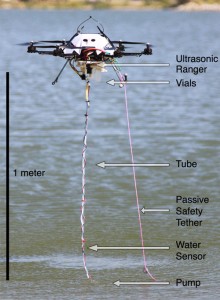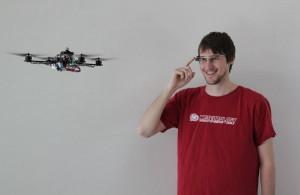Monitoring and predicting water quality poses a significant challenge since sources of fresh water and contaminants come in from huge areas of land and waterways. Further, the source of pollution can change quickly during and after rainfall events. Characterizing large-scale and quickly changing water systems remains a critical bottleneck that inhibits understanding of transport processes and the development of effective management plans to address water quality issues. Fixed sensors tend to lack the versatility to directly detect contaminants of interest, are expensive, and only monitor a single location. Consequently, there is still a strong reliance upon manual “grab-sampling” within hydrologic and aquatic ecology applications. At best, this reliance is expensive, inconvenient and presents safety risks to personnel involved (e.g. when samples must be taken at night). At worst, manual sampling results in datasets that cannot answer many questions of interest due to limitations of temporal and spatial resolution in the sampling strategy or the inaccessibility of sites (e.g. canyons).
This research develops an aerial water sampling system that can be quickly and safely deployed to reach varying and hard to access locations, that integrates with existing static sensors, and that is adaptable to a wide range of scientific goals. The capability to obtain quick samples over large areas will lead to a dramatic increase in the understanding of critical natural resources. This research will enable better interactions between non-expert operators and robots by using semi-autonomous systems to detect faults and unknown situations to ensure safety of the operators and environment. To achieve this we will:






